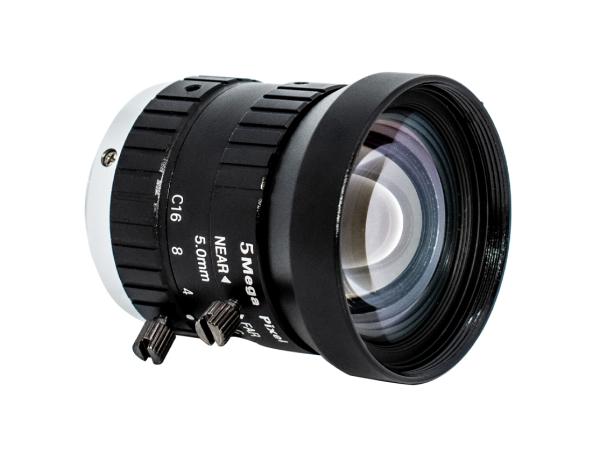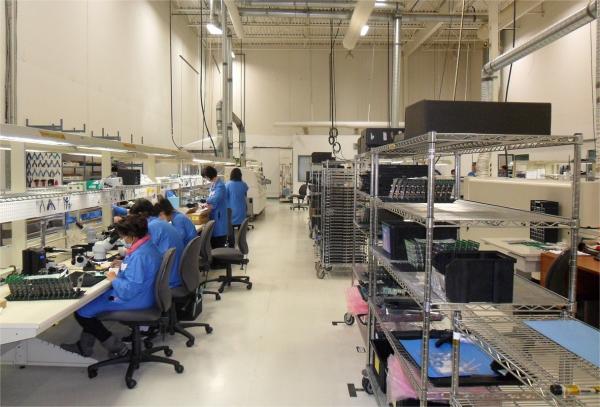The Principle And Function Of Machine Vision Lenses
Machine vision lens is an industrial camera lens that is specially designed for machine vision systems. Its main function is to project the image of the photographed object onto the camera sensor for automatic image collection, processing and analysis.
It is widely used in many fields such as high-precision measurement, automated assembly, non-destructive testing, and robot navigation.
1、The principle of machine vision lens
The principles of machine vision lenses mainly involve optical imaging, geometric optics, physical optics and other fields, including focal length, field of view, aperture and other performance parameters. Next, let’s learn more about the principles of machine vision lenses.
Principles of optical imaging.
The principle of optical imaging is that the lens focuses light onto the sensor through multiple lens groups (like space lenses and object space lenses) to generate a digital image of the object.
The position and spacing of the lens group in the optical path will affect the focal length, field of view, resolution and other performance parameters of the lens.
Principles of geometric optics.
The principle of geometric optics of the lens is to focus the reflected light from the object onto the sensor surface under the conditions that the laws of light reflection and refraction are satisfied.
In this process, it is necessary to overcome the aberration, distortion, chromatic aberration and other problems of the lens to improve the imaging quality.
Principles of physical optics.
When analyzing lens imaging using physical optics principles, it is necessary to consider the wave nature and interference phenomena of light. This will affect the performance parameters of the lens such as resolution, contrast, dispersion, etc. For example, coatings on lenses can address reflection and scattering issues and improve image quality.
The machine vision lens
Focal length and field of view.
The focal length of a lens refers to the distance between the object and the lens. It determines the size of the lens’ field of view, that is, the range of images that the camera can capture.
The longer the focal length, the narrower the field of view, and the greater the image magnification; the shorter the focal length, the wider the field of view, and the smaller the image magnification.
Aperture and depth of field.
An aperture is an adjustable hole in a lens that controls the amount of light that passes through the lens. The aperture size can adjust the depth of field (that is, the clear range of imaging), which affects the brightness of the image and the quality of the imaging.
The larger the aperture, the more light enters and the shallower the depth of field; the smaller the aperture, the less light enters and the deeper the depth of field.
Resolution.
Resolution refers to the minimum distance that the lens can resolve, and is used to measure the clarity of the lens’ image. The higher the resolution, the better the image quality of the lens.
Generally, when matching, the resolution of the machine vision lens should match the pixels of the sensor, so that the system performance of the lens can be fully utilized.
2、The function of machine vision lens
Machine vision systems are widely used in electronic manufacturing, industrial manufacturing and other fields. As the most important component of the vision system, machine vision lenses have a decisive impact on the performance and effects of the system.
The main functions of machine vision lenses are as follows:
Form an image.
The vision system collects information about the target object through the lens, and the lens focuses the collected light on the camera sensor to form a clear image.
Functions of machine vision lenses
Provides a field of view.
The field of view of the lens determines the size and field of view of the target object that the camera will collect. The choice of field of view depends on the focal length of the lens and the sensor size of the camera.
Control the light.
Many machine vision lenses have aperture adjustments that control the amount of light entering the camera. This function is important for obtaining high-quality images under different lighting conditions.
Determine the resolution.
A good lens can provide clear, high-quality images with high-resolution details, which is very important for accurate detection and identification of objects.
Lens distortion correction.
When designing machine vision lenses, distortion will be corrected so that the lens can obtain true and accurate results during image processing.
Depth imaging.
Some advanced lenses can provide depth information, which is very important for tasks such as object detection, recognition, and positioning.
Final Thoughts:
ChuangAn has carried out the preliminary design and production of machine vision lenses, which are used in all aspects of machine vision systems. If you are interested in or have needs for machine vision lenses, please contact us as soon as possible.

